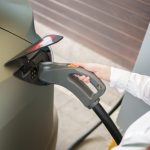A recent assessment of Tesla’s operations demonstrates growing industry attention on the company’s progress toward full vehicle autonomy, with analysts signaling increased confidence in the Full Self-Driving (FSD) software. Piper Sandler’s visit to Tesla’s Fremont Factory included both a detailed inspection of the FSD Version 14 technology and direct conversations with the leadership about advances in autonomy, chip design, and deployment strategy. As technology stocks fluctuate and regulatory challenges loom, Tesla continues to attract both high expectations and skepticism from different industry voices, amplifying debates on the future of autonomous vehicles and their impact on the broader automotive market.
Previous analyses of Tesla’s FSD revealed a product in developmental stages, with mixed results from both public and expert road tests. In contrast to earlier opinions, recent demonstrations have indicated noticeable progress in ride quality, navigation, and safety features. Despite periodic criticisms about regulatory delays and technical hiccups, analysts now more frequently emphasize maturity in object detection and smoother ride experiences. Most notably, the price target assigned to TSLA by financial institutions has trended higher, reflecting optimism on future profitability from autonomy solutions, although valuation disagreements among major banks remain evident.
What Progress Has Tesla Made Toward Full Autonomy?
Analysts from Piper Sandler identified significant improvements in Tesla’s FSD technology, underscoring more refined perception systems and better object handling in real-world demos. The latest FSD V14 reportedly matched or exceeded the performance of average human drivers during a robotaxi demonstration. Tesla executives spent over an hour discussing technical advancements and deployment plans, highlighting the ongoing refinement in both software and hardware.
How Do Financial Institutions View Tesla’s Technology and Stock?
Piper Sandler reaffirmed its $500 price target following the factory visit, specifically noting the FSD V14’s advancements in smoothness and reliability.
“We think FSD is a truly impressive product that is (probably) already better at driving than the average American,”
said analyst Alexander Potter. Other financial institutions display a wide range of targets, with Wedbush at $600, TD Cowen at $509, Stifel at $508, and HSBC significantly lower at $131, reflecting differing opinions on the integration of autonomy with Tesla’s financial performance.
What Strategic Initiatives Did Tesla Discuss with Analysts?
Tesla leaders addressed areas beyond driver autonomy by discussing advances in in-house chip design, the optimization of cost structures, and mid-term margin recovery prospects. Updates on the Optimus program and battery storage developments were also included in their discussions.
“We remain focused on expanding the capabilities of our autonomous products and optimizing cost for future scalability,”
stated a Tesla representative during the analyst briefing. This multifaceted strategy, incorporating hardware, software, and cost discipline, remains central for the company’s medium-term growth outlook.
Tesla’s evolving position in the autonomy sector continues to draw mixed reactions from analysts and investors, with major targets diverging as technical progress is weighed against challenging market fundamentals. The current consensus from multiple demonstrations points to improved stability and decision-making by the FSD system, but confidence levels still differ due to macroeconomic and regulatory uncertainties. Investors and industry observers are closely watching whether Tesla’s pace of improvement can translate into sustainable real-world deployment and financial returns. The valuation gulf between bullish and cautious institutions highlights the uncertainties that come with scaling advanced autonomous technologies.
Those following Tesla’s FSD efforts can learn from the shifting landscape in analyst sentiment and stock price targets, which reflect underlying debates around the viability and commercialization of autonomous vehicle technology. For readers evaluating automotive stocks or consumer technologies, understanding the key factors—like system reliability, cost structure, and competitive differentiation—offers valuable insight. Monitoring the ongoing field tests and regulatory milestones will remain critical in assessing whether Tesla’s vision for self-driving can consistently meet real-world demands and investor expectations.










